

[Back to Warbird Alley Main Index]
*Chanute Air Museum
*Aircraft
*Maintenance / Restoration *Organizations
*Museums
*Major Airshows
*News
*Fly a Warbird
*Warbird Bookstore
*Flight
Simulator Store
*Miscellaneous Links
*Warbird Alley Products
Submissions/Corrections to:
editor@warbirdalley.com
© 2015 The Doublestar Group
|
Warbird Alley
Photo Feature
The Octave Chanute Aerospace Museum
A Final Look, September 2015
|
The
Octave Chanute Aerospace Museum, in Rantoul, Illinois, USA, was
located at the former Chanute AFB.
The base was a key
technical training center for the U.S. Army and U.S. Air Force since
1917.
Chanute closed in 1993, and the museum opened in 1994, comprised largely
of aircraft that were already on display around the base. Most of the
collection is housed inside a large hangar, with a dozen or so larger
aircraft parked outside. Unfortunately, the collection of over 40
aircraft and hundreds of artifacts closed its doors forever
in December 2015 due to financial issues.
[More
information on the circumstances leading to the closure >>]
We visited Chanute one last time in September 2015, and captured some photos
of the shortly-to-be closed facility. |
Click on
the photos to enlarge them.
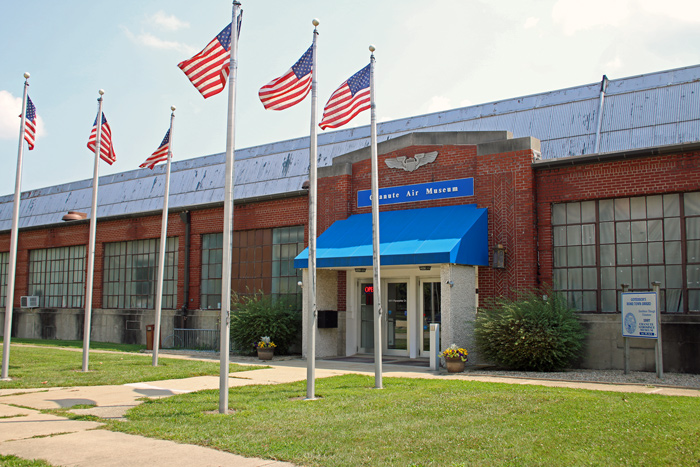
| The main
entrance of the museum in Grissom Hall,
which was formerly a Minuteman missile maintenance training facility.
|
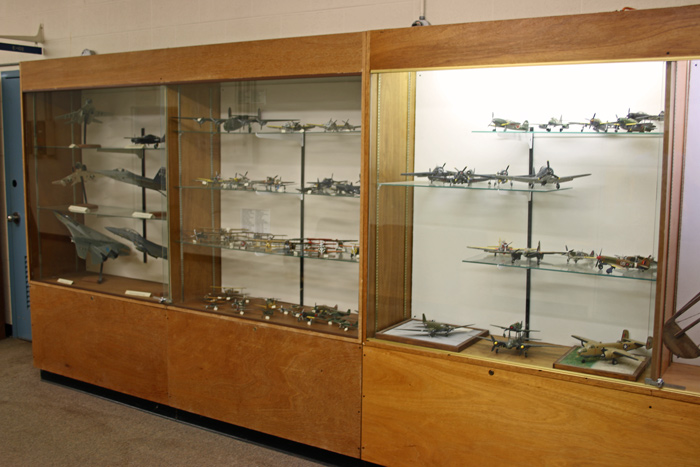
|
Once inside, and prior to reaching the main hangar
displays, there is a series of galleries and hallway
exhibits highlighting various time periods in military
aviation history at Chanute AFB, as well as other
specialized aviation exhibits. Among the displays are
hundreds of scale models in dozens of display cases. |
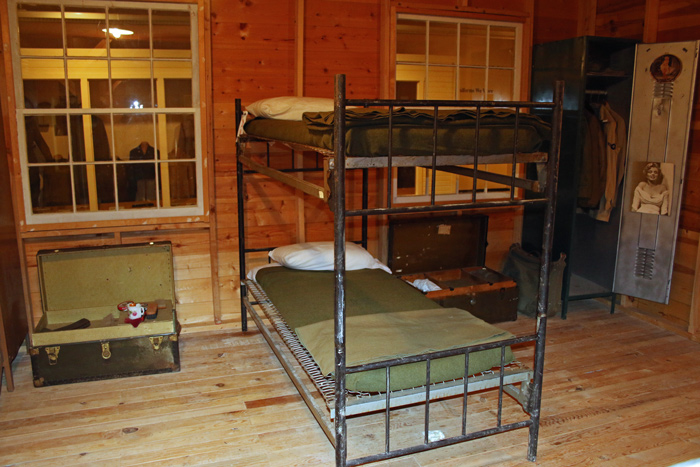
| There are some interesting
recreations of various base facilities, including this vintage barracks
room. |
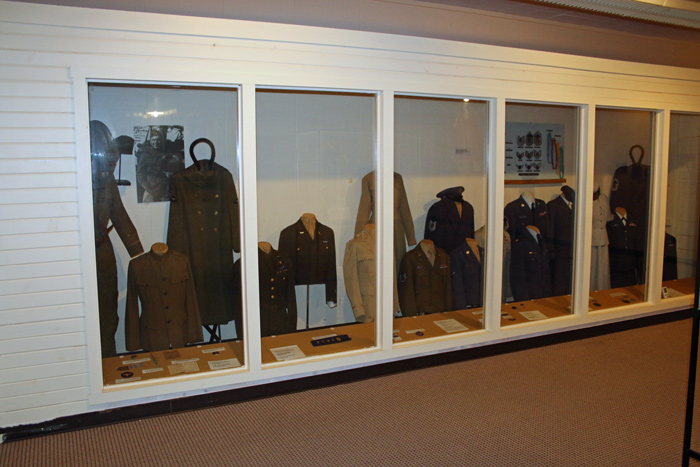
| Throughout the museum, there are exhibits of
military clothing and flight gear from various eras. |
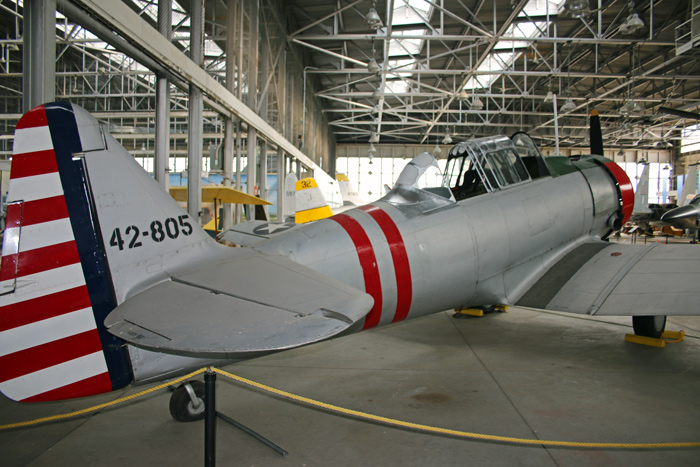
| Upon stepping into the
hangar, you are greeted by this newly-restored North American AT-6B
Texan, painted in the early colors of an AT-16 Harvard from the 35th
Pursuit Squadron at Langley AFB. This aircraft will soon be headed to
the Air Force Museum in Dayton, Ohio. [The beautiful restoration of this aircraft was carefully chronicled
here.] |
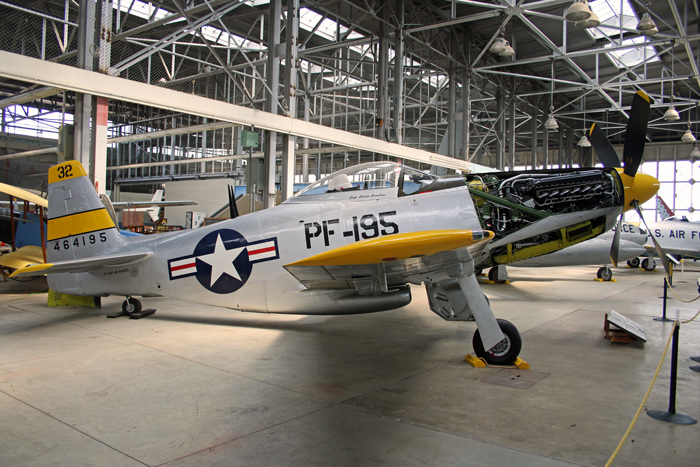
This rare North American P-51H Mustang (s/n
44-64265) has been painstakingly restored by museum volunteers. It is
named "Louisiana Heatwave" as a tribute to WWII ace Claude Crenshaw. [
More information >> ]
[Note: This aircraft is headed to Warner Robins AFB in
Georgia.] |
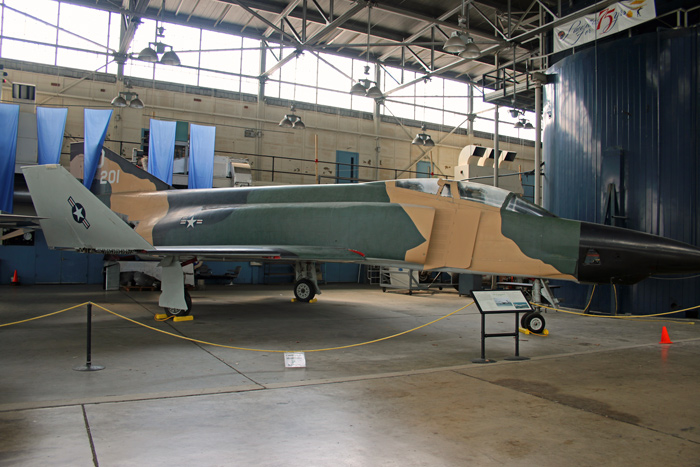
| McDonnell-Douglas YRF-4C Phantom II (s/n
62-12201),
a prototype of the RF-4 reconnaissance version of the Phantom. |
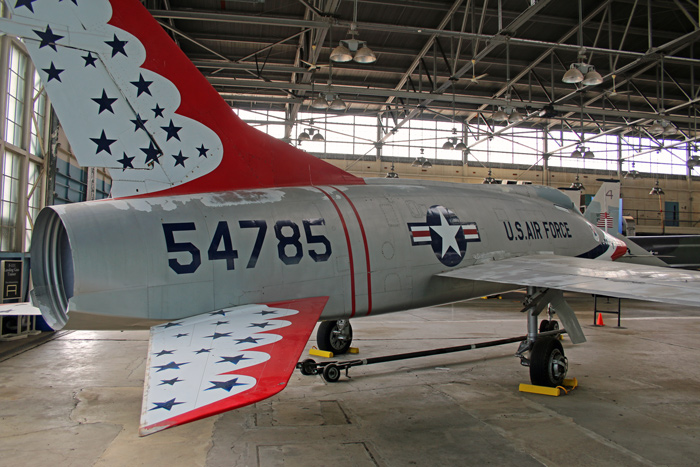
| North American F-100C Super
Sabre (s/n 54-1785), in U.S. Air Force
Thunderbirds markings. |
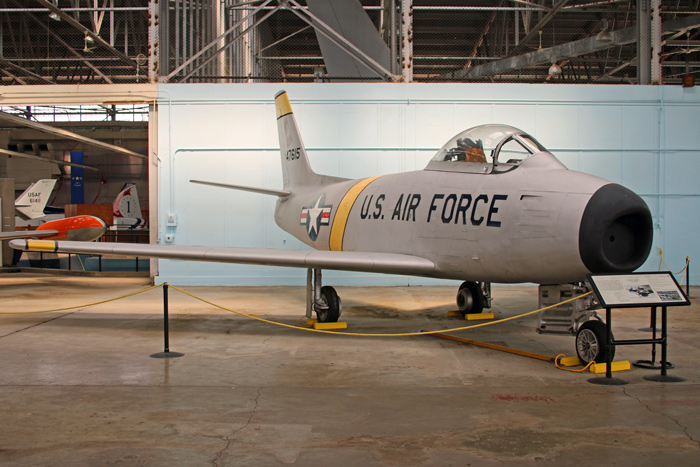
| A rare "A-model" North American F-86A Sabre (s/n
47-0615). This aircraft is the third-oldest A-model Sabre in existence. The National Museum
of the Air Force (the owner of this aircraft as well as most of the
others at Chanute) has expressed some concern about low-level radiation
in this aircraft, and there are rumors that it may be scrapped. |
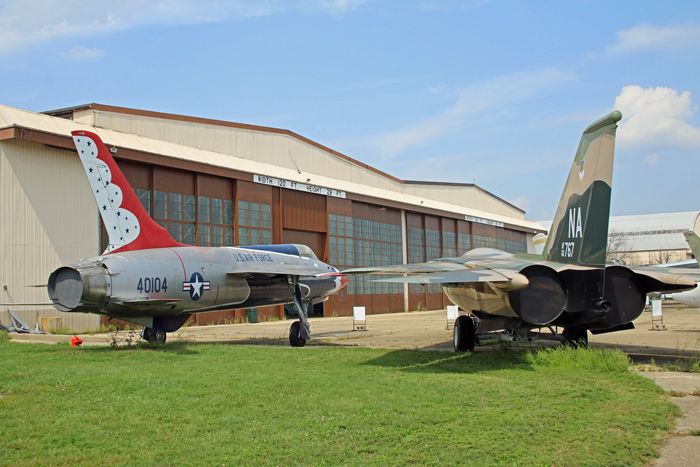
|
Outside the hangar, about a dozen aircraft are
nestled close together in a fenced compound. Here, an F-105B
Thunderchief and an F-111A Aardvark share a front row location.
|
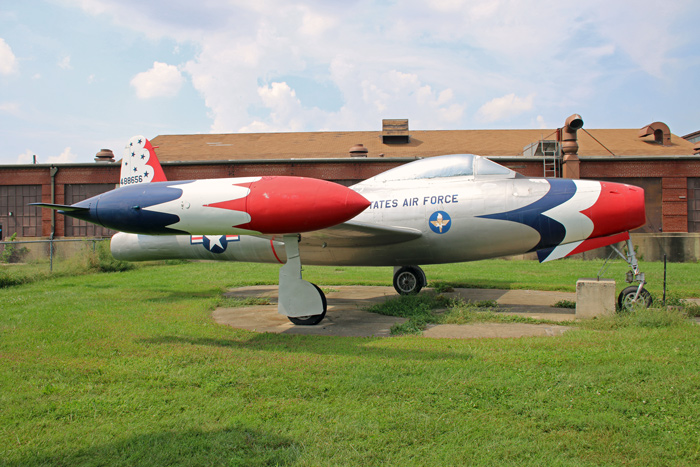
An early, "straight-wing" Republic F-84A
Thunderjet. It was the first single-seat fighter to carry a nuclear
weapon.
[Note: This aircraft will be heading to the Discovery
Park of America in Union City, Tennessee.] |
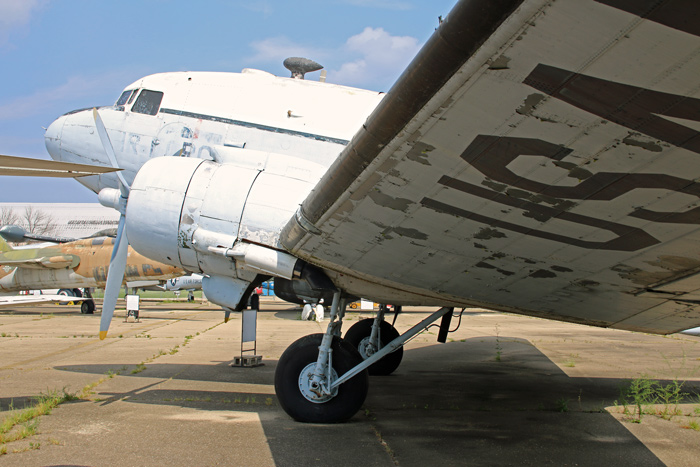
| A Douglas VC-47D Skytrain.
This aircraft was modified for VIP/staff transport. |
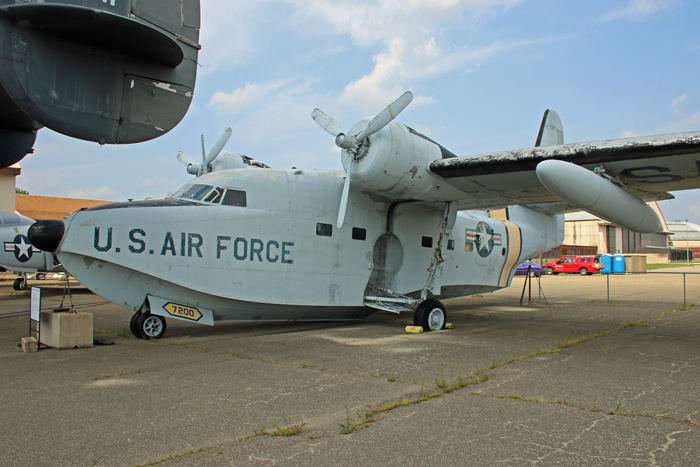
| A Grumman SA-16 Albatross, formerly operated by
the U.S. Air Force in a combat rescue role. |
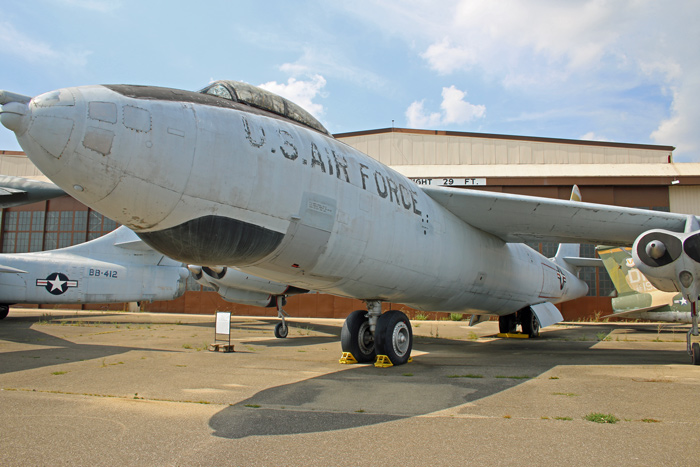
| This Boeing XB-47 Stratojet is the only
surviving example of its type in the world. It made its maiden flight in
1947. The B-47 became the backbone of the Strategic Air Command in the
1950s. The Chanute museum has announced that this aircraft will be
moving to Edwards AFB in California. |
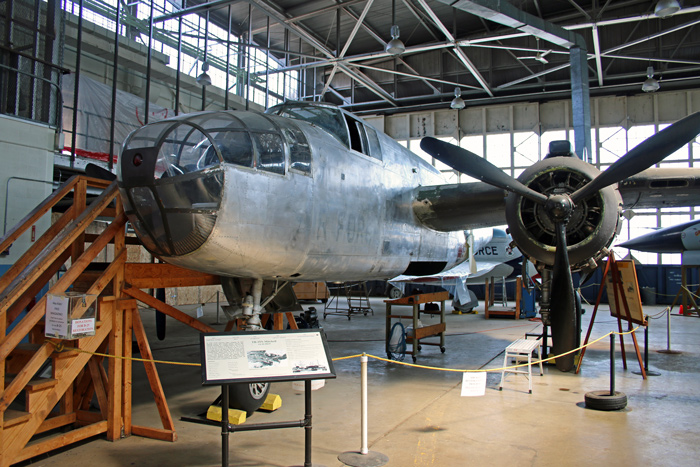
| This North American TB-25N / B-25J Mitchell has
been undergoing a substantial cosmetic restoration for several years.
Its future home will be the Southern Museum of Flight in Birmingham,
Alabama. [
Restoration information >> ] |
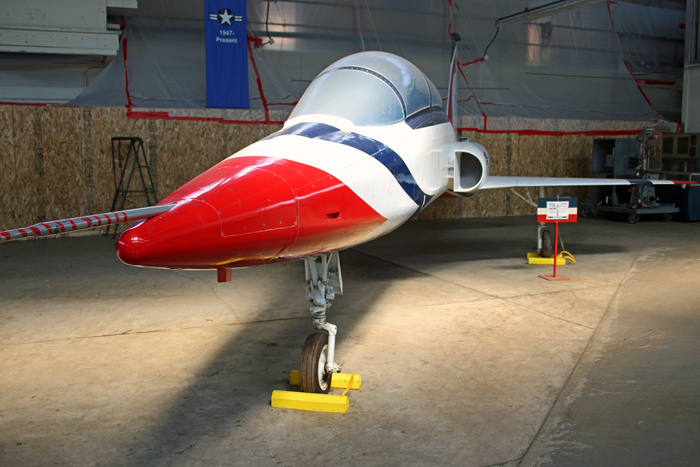
| This Northrop T-38A Talon is painted in
Thunderbirds colors. An unusual aspect of this display is that
nearby signage spuriously claims it to be an F-5 Freedom Fighter. |
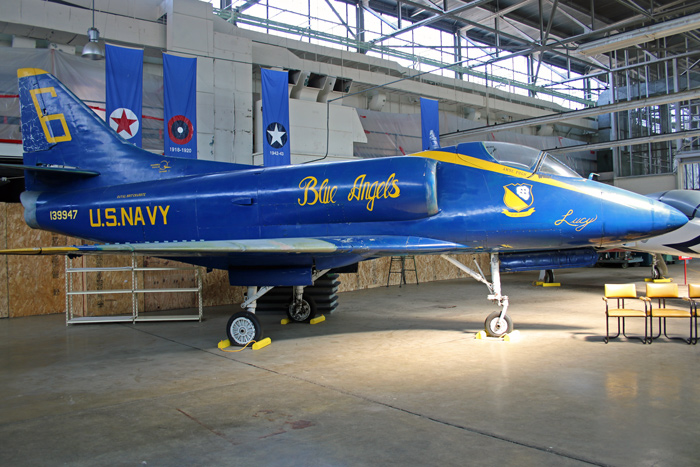
| The museum's Douglas A-4A Skyhawk (BuNo 139947)
is one of two aircraft at Chanute that is actually owned by the U.S.
Navy. It was never flown by the Blue Angels, but the tenant Navy unit on
base decided that, since so many of the base's aircraft were painted in
Thunderbirds colors, they had to paint the A-4 as a Blue Angel. |

| A Reaction Motors XLR-11, the first rocket motor
developed for use in aircraft. In 1947, an XLR-11 powered Chuck Yeager's
X-1 aircraft through Mach 1 for the first time. This display engine was
Serial #6. The white tag denotes that it will soon be returned to the
NMUSAF (National Museum of the U.S. Air Force). |
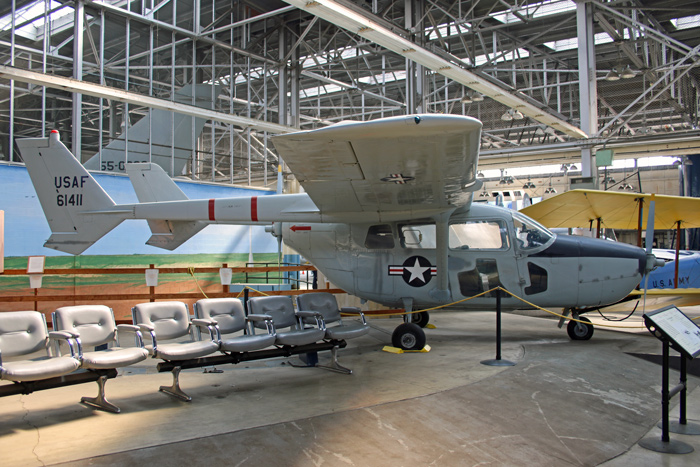
| The venerable Cessna O-2A
Skymaster, also known as the "Oscar Deuce" or the "Duck," was a very
capable Forward Air Control aircraft. The museum's O-2 saw combat in
Vietnam from 1967 to 1972. |
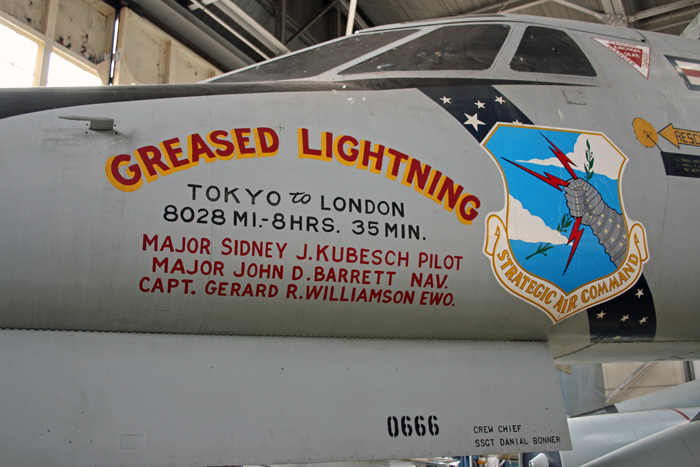
| The museum's Convair B-58A Hustler bomber is one
of only eight in the world. It was modified from a YB-58 pre-production
development into a TB-58 dual-control trainer. This aircraft is headed
for Castle AFB, California.
News link>> |
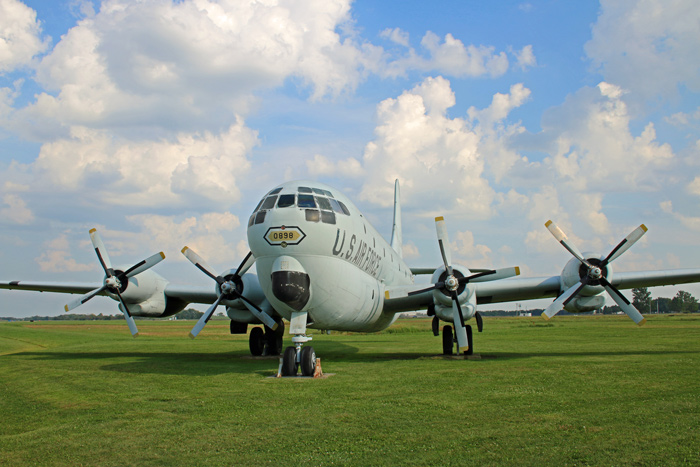
| The museum's majestic Boeing C-97G
Stratofreighter (s/n 52-0898) is located about a quarter-mile from the
museum, near the approach end of Runway 9 at Frank Elliott Field (as the
former base's airport is now known). The current plan for this aircraft
is that its tail and some smaller parts will go to the McGhee-Tyson Air
National Guard base in Tennessee, while the remainder of the aircraft
will be scrapped. |
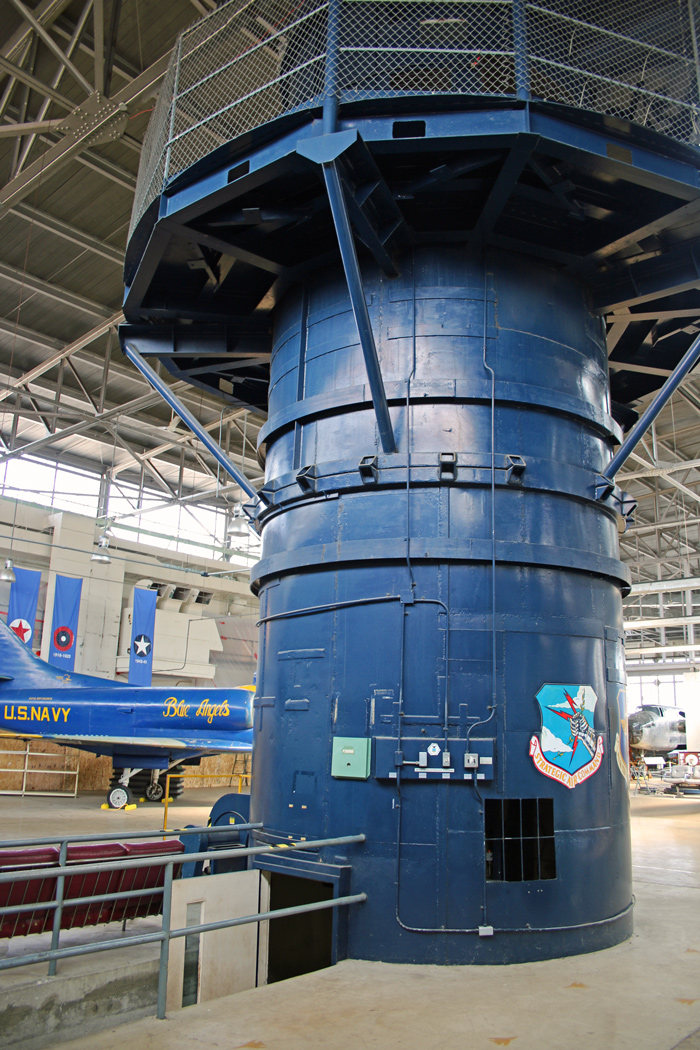
| Mixed in with the airplanes in the Chanute
museum's hangar are three segments of a Minuteman ICBM missile silo.
These sections, built by Boeing, were used as training devices for
missile maintenance technicians and support personnel. This is the lower
segment of the silo. At one time, there were over a thousand Minuteman
silos scattered all over the central United States, each capable of
delivering a 1.2-megaton nuclear payload to their Cold War targets within 30
minutes. |
Editor's Note: I want to present an "aside" to this article -- and I
want to be very clear that this not a criticism of any museum,
person, or organization.
Rather, I want to take a forthright, honest look at some issues that
affect all aircraft museums.
The Octave Chanute Air Museum displays some special, one-of-a-kind
aircraft, some of which are very large. Many of them cannot be housed
indoors due to space limitations and expense. Because of this, they are
subject to temperature extremes, rain, snow, wind, birds, insects,
rodents, etc. The museum has done its best to mitigate these effects
where it can, but with a volunteer staff and limited financial
resources, only so much can be done. These are the same factors that
affect many, if not most, museums of this type.
So what is the result of these factors? Crumbling, slowly-dying
airplanes. I can't say it any more simply that that.
We've all seen display airplanes with 50 coats of paint from 25 years of
enthusiastic volunteers attempting to protect them and keep them looking
fresh. But this is just wishful thinking in the long run. Corrosion
creeps in everywhere, and pretty soon these airplanes are essentially
globs of rust covered with paint. Hydraulic struts collapse. Tires go
flat. Birds makes nests, and their messes eat through aluminum and
steel. The hot summer sun burns Plexiglas and paint.
Many of Chanute's aircraft were mounted on poles in various locations
around the base for many years, and it shows. Several aircraft, while now displayed indoors and looking good
from 20 feet away, are severely corroded and will not last much longer
without serious mitigation work.
We all want to see historic airplanes displayed in pristine,
climate-controlled indoor facilities, but without sufficient funding,
leadership and volunteer involvement, this simply won't happen in many
cases.
My plea is this: It is imperative that any rare and significant aircraft
we wish to preserve are somehow -- at any cost -- moved indoors. This is the only way we can expect to keep them on display for future
generations to enjoy and learn from.
The Chanute Air Museum is but one symptom of a much larger issue. Our
aeronautical history is fading -- dying a slow, rust-covered death. In
addition to figuring out ways to build protective hangars for their
collections, museums need passionate leaders who actually care about aviation,
and they need more good volunteers -- the people who give
some of their time to clean, polish, paint, and lavish some care on
these airplanes. In short, they need YOU. Please support our nation's
aircraft museums however you can!
* * * * *
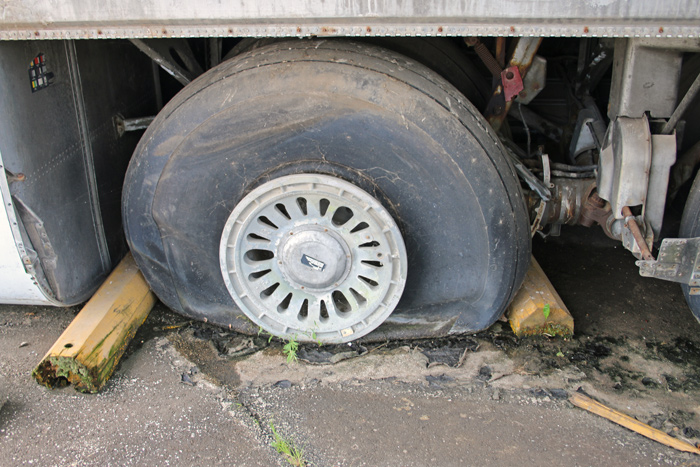
| A Douglas C-133A Cargomaster
sinks into the asphalt. |
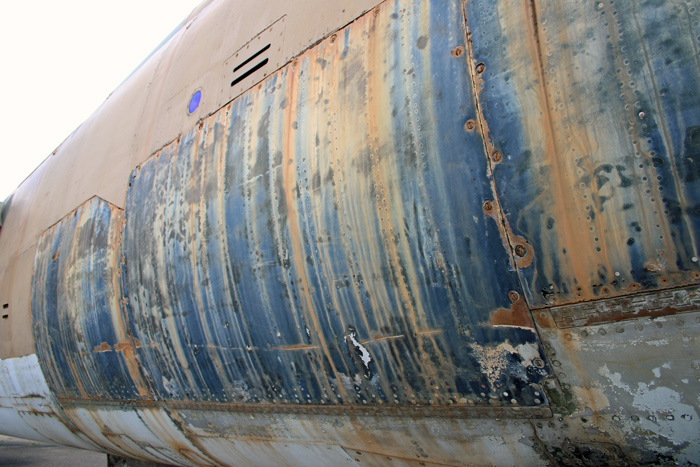
| Republic F-105F Thunderchief. This F-105 was the
last one to fly (on 10 March 1984). It is nicknamed "Root Pak Rat"
after Route Pack 6, one of the most dangerous areas of operation over
North Vietnam. |
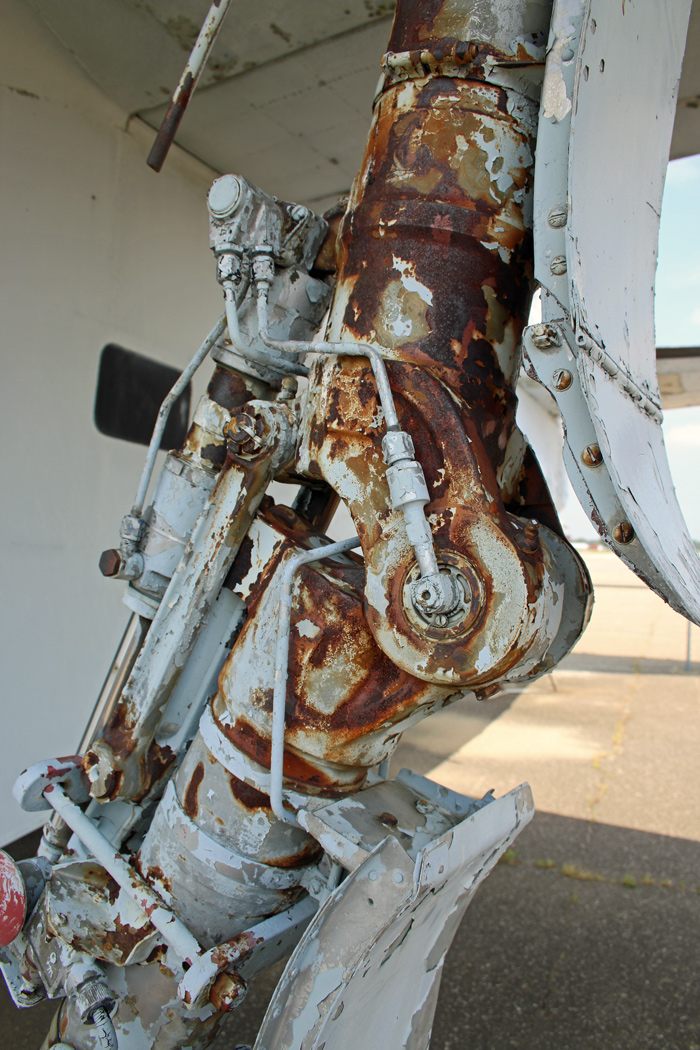
| The landing gear of the
Grumman SA-16 Albatross. |
A look at the former Chanute AFB:
The former Air Force base, like the air museum's aircraft, shows
its age in many places. But, like the old airplanes, the old buildings give visitors a
fascinating look back in time.
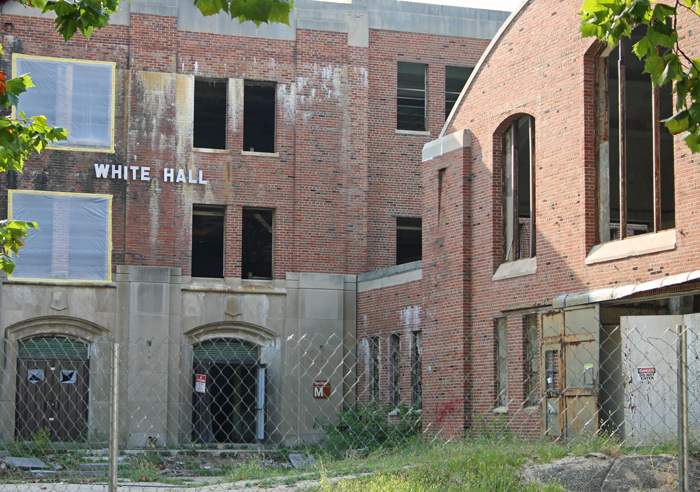
| White Hall (formerly known as "Buckingham Palace" during the 1940s) was
the largest military building in the world until the Pentagon was built.
At nearly 500,000 square feet in size, it contained barracks,
laboratories, classrooms, and dining facilities. Like many of the base's
buildings, it was full of lead and asbestos, and suffered from
antiquated heating and air conditioning systems. It is currently being demolished. |
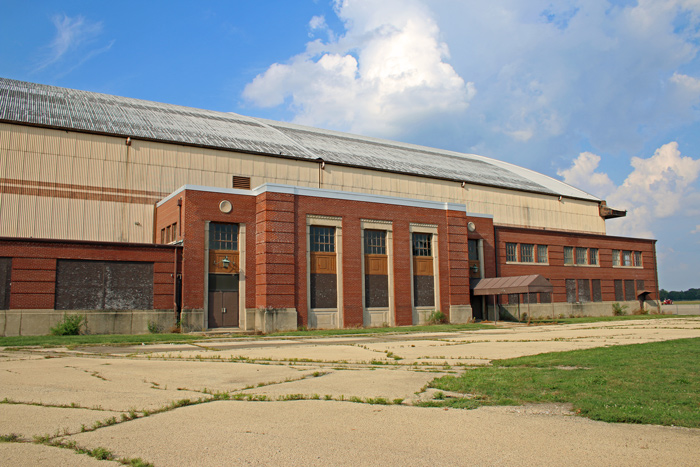
| In addition to the hangar
that houses the air museum, there are two much larger "art-deco" style
hangars at Chanute, each built in 1938. These wonderful buildings have a
special aura about them. |
Chanute AFB Information:
More information about Chanute Air
Force Base can be found
here.
Museum Information:
The Octave Chanute Air Museum
was located at the site of the former
Chanute Air Force Base in Rantoul, Illinois, about 110 miles
south-southwest of Chicago. The address of the museum's hangar is 1011 Pacesetter Drive,
Rantoul, IL 61866.
As of December 2015, the museum is now closed, and its assets are being distributed to
museums and other entities across the country.

Contact the editor at:
editor@warbirdalley.com
Copyright © 2015 The Doublestar Group
All Rights Reserved.
These photos may only be used for
your own reference and enjoyment.
|

